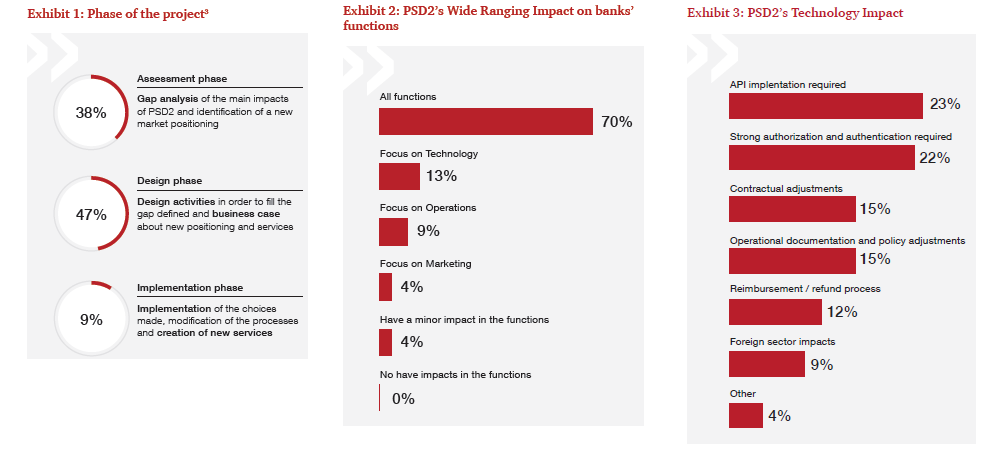Open banking and APIs: transforming the future of treasury
| 05-11-2019 | treasuryXL | BELLIN
Open banking is about much more than advanced technology. It has an impact on business models, processes and ways of thinking – and it will definitely have a huge impact on treasury.
The EU’s revised payment services directive (PSD2) has forced European banks to set up standardised interfaces, so-called APIs, to enable third parties’ technological access to bank accounts. This is an attempt to break up the banks’ monopoly and boost competition amongst payment service providers.
When it comes to payments, PSD2 APIs are currently limited to single Euro payments area (SEPA) single payments. Simply put, they are generally ill-suited for corporate payment processing. Nevertheless, open access to customer and transaction data for third parties represents a radical change that threatens traditional banking business models.
While in the past, banks reigned freely over their customers’ financial data – often keeping them in the dark about margins, fees and transaction routes – open banking makes banking fundamentally more democratic and gives companies much more freedom and flexibility.
How does a company want to handle its payment processing? With open banking, it will be of little relevance to corporates exactly how their payments are processed. As long as the payment goes from A to B, the back-end technology being used is up to the service provider. What will be more significant for corporate treasury departments when it comes to payments is how quickly this information becomes available to them.
Open banking’s impact on cash management
Today, treasurers are blind when it comes to intraday cash flow movements. Depending on the bank, they only receive balance information a few times a day at specific times. This has always been as real-time as it gets. Treasurers who would like to know their account balance at any time and in ‘real, real-time’ need to request this information. But how can you know when to best inquire about your account balance when you have no idea when money will be credited?
Some companies make use of automated requests, managed in their treasury management system (TMS). The system sends scheduled requests to the bank, for example every minute, to check if any new information is available. An analogy would be sending round a company postman to empty the letterbox every few minutes without knowing if anyone has actually posted a letter. This leads to enormous amounts of data and clogs up communication channels and systems, without really solving the issue.
A much more intelligent solution would be to not request the information until it is actually available. For that to work, there would need to be some kind of signal that data has come in – just like the signal flag on American letterboxes. New technologies, such as APIs and WebSockets, enable this kind of reversed order. The bank signals that a new balance is available as soon as money is credited to or debited from an account, and treasurers and other finance professionals can then take action. The same is true for payments, where status notifications for a transaction would be available straight away.
The future of APIs
What will the future look like for banking communication? Will APIs relegate existing technologies, such as electronic banking internet communication standard (EBICS) or SWIFT, to the sidelines? APIs’ greatest downfall is their lack of standardisation. Conversely, complete and powerful standardisation across the SEPA area is the biggest asset of these established communication channels.
In the context of PSD2, there have been various European initiatives to achieve standardisation, for example those of the Berlin Group. However, there is no comparable global initiative, and when BELLIN recently analysed the open banking offering of the ten most relevant banking groups, the discrepancies were staggering. What is needed are suitable enhancements of established technologies that could then be combined with new technologies, for example combining the EBICS protocol with API technology.
And this future is not far off. Massive changes that will impact treasurers’ day-to-day work significantly are just around the corner. Large retailers have already implemented instant payment solutions using APIs that not only enable them to transfer money, but also to receive notifications when a payment has come in as soon as it does. This has enabled them to fully connect payment processing, real-time balance information and customer service.
Direct communication of data between companies and banks is likely to have other, far-reaching consequences for treasury, for example when it comes to FX and risk management. Real-time corporate-bank communication definitely brings challenges for cash management. Banks will have to solve how cash pooling is handled in the future whilst also determining the time on which interest calculations are based. However, with new standards for speed, efficiency and data quality, open banking will continue to revolutionise treasury far beyond 2020.

Karsten Kiefer
Product Manager Solution Management



 In 2018, when PSD2 comes into force, banks will lose their monopoly on payment services and customer’s account details. Bank customers will be able to use third-party providers (TPP) to administer their payments. When a customer agrees on using the services of a TPP, then their bank has to give access to TPPs to their accounts. TPPs are then able to build and offer services that compete with the existing bank services. During the summer 2017, I published a Summer Update on PSD2. Since then, a lot of things have moved, and hence I found it the right moment to provide an update to you on some developments on PSD2, in this area.
In 2018, when PSD2 comes into force, banks will lose their monopoly on payment services and customer’s account details. Bank customers will be able to use third-party providers (TPP) to administer their payments. When a customer agrees on using the services of a TPP, then their bank has to give access to TPPs to their accounts. TPPs are then able to build and offer services that compete with the existing bank services. During the summer 2017, I published a Summer Update on PSD2. Since then, a lot of things have moved, and hence I found it the right moment to provide an update to you on some developments on PSD2, in this area.
 François de Witte – Founder & Senior Consultant at
François de Witte – Founder & Senior Consultant at  The Paypers
The Paypers Annette Gillhart – Community manager treasuryXL
Annette Gillhart – Community manager treasuryXL Early 2017, I published a post about PSD2, a lot of opportunities, but also big challenges. Now half a year later, I would like to update you on some developments in this area. PSD2 still needs to be transposed in the national legal system of all the member countries, and according to my knowledge several countries, including Belgium, have not yet released the draft laws. This creates quite some uncertainty in the market, as there will be several country-specific specifications. Hence one can expect that Fintech’s and other TPPs might already have started their certification application in countries that already enacted PSD2 in their local legislation.
Early 2017, I published a post about PSD2, a lot of opportunities, but also big challenges. Now half a year later, I would like to update you on some developments in this area. PSD2 still needs to be transposed in the national legal system of all the member countries, and according to my knowledge several countries, including Belgium, have not yet released the draft laws. This creates quite some uncertainty in the market, as there will be several country-specific specifications. Hence one can expect that Fintech’s and other TPPs might already have started their certification application in countries that already enacted PSD2 in their local legislation.
